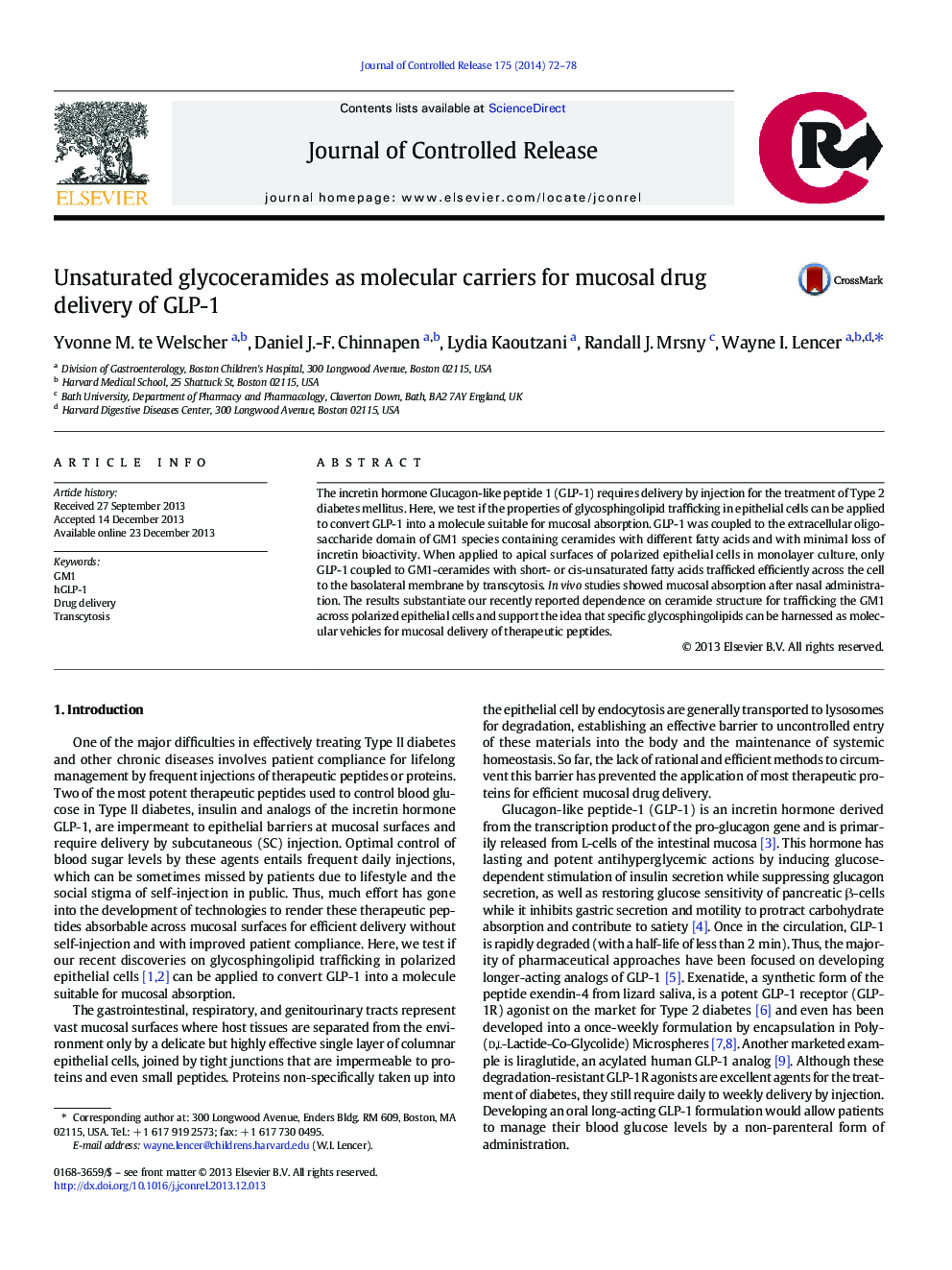| Article ID | Journal | Published Year | Pages | File Type |
|---|---|---|---|---|
| 1424142 | Journal of Controlled Release | 2014 | 7 Pages |
The incretin hormone Glucagon-like peptide 1 (GLP-1) requires delivery by injection for the treatment of Type 2 diabetes mellitus. Here, we test if the properties of glycosphingolipid trafficking in epithelial cells can be applied to convert GLP-1 into a molecule suitable for mucosal absorption. GLP-1 was coupled to the extracellular oligosaccharide domain of GM1 species containing ceramides with different fatty acids and with minimal loss of incretin bioactivity. When applied to apical surfaces of polarized epithelial cells in monolayer culture, only GLP-1 coupled to GM1-ceramides with short- or cis-unsaturated fatty acids trafficked efficiently across the cell to the basolateral membrane by transcytosis. In vivo studies showed mucosal absorption after nasal administration. The results substantiate our recently reported dependence on ceramide structure for trafficking the GM1 across polarized epithelial cells and support the idea that specific glycosphingolipids can be harnessed as molecular vehicles for mucosal delivery of therapeutic peptides.
Graphical abstractFigure optionsDownload full-size imageDownload high-quality image (158 K)Download as PowerPoint slide
